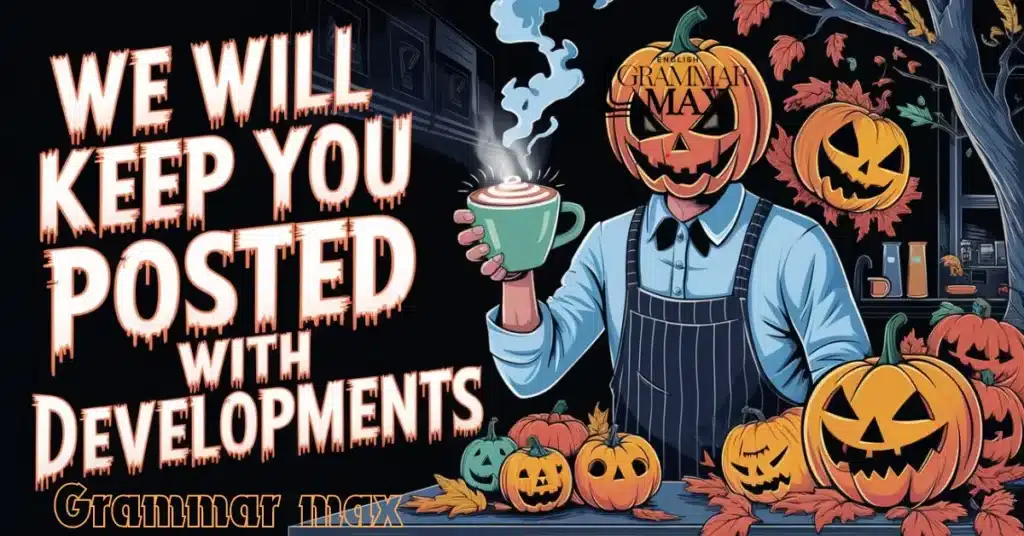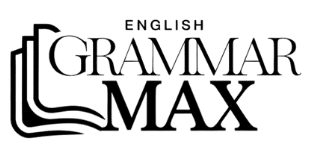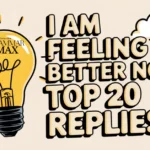In professional settings, maintaining communication is key, and the phrase “stay tuned” can often feel too informal. Finding polished alternatives can help you communicate more effectively while maintaining professionalism. Here, we explore 22 ways to say “stay tuned” professionally, along with best use cases and scenarios for each. This article is designed to provide you with synonyms for stay tuned that will fit various business contexts, particularly emails, meetings, and project updates.
Each phrase includes scenario examples to ensure you have practical ways to use them in the workplace.
Alternative Ways to Say “Stay Tuned”

Here are 22 ways to say “Stay Tuned” professionally:
- We will keep you posted with developments
- More information will follow shortly
- Stay informed by following our updates
- Stay alert for our next announcement
- Keep an eye out for upcoming updates
- Expect more details to be revealed soon
- Please await further details
- We will be providing more updates in due course
- Further specifics will be disclosed imminently
- Anticipate further announcements
- Details to be unveiled in the near future
- Look forward to more information soon
- Stay updated for future communications
- Updates will be provided shortly
- Await the latest developments
- Further insights will be shared soon
- Upcoming communications will provide more details
- Expect news in the coming weeks
- Prepare for upcoming announcements
- Ongoing communications will keep you updated
- We’re working on details and will share soon
- Stay engaged for future updates
1. Please Await Further Details
This phrase is polite, professional, and leaves no ambiguity regarding the next steps. It works particularly well when you need to ask someone to wait for more information.
Example: Email to a client:
“Dear John,
Thank you for your inquiry. Please await further details regarding the next steps in the project. We are gathering the necessary information and will provide a comprehensive update by the end of the week.
Best regards,
Susan”
Best Use:
Emails, formal communications, and project updates.
2. More Information Will Follow Shortly
This phrase is clear, direct, and implies that further communication is imminent. It’s perfect for formal updates where you’re sure about the timing.
Example: Email to a team:
“Hi Team,
We’ve completed the initial stage of the proposal. More information will follow shortly regarding the next phase.
Thanks,
David”
Best Use:
Client emails, internal updates, and status reports.
3. Keep an Eye Out for Upcoming Updates
This is an excellent choice for informal yet professional settings. It creates a sense of anticipation and shows that updates will come soon.
Example: Internal newsletter:
“Hi Everyone,
We’re making some exciting changes to our internal processes. Keep an eye out for upcoming updates regarding new policies.
Best,
Management”
Best Use:
Internal communications, newsletters, team memos.
4. Anticipate Further Announcements
When you need to communicate that updates are in progress but not immediately available, this phrase works well.
Example: Email to stakeholders:
“Dear All,
We’re finalizing the project’s budget revisions. Anticipate further announcements once we’ve completed the review process.
Best regards,
Michelle”
Best Use:
Stakeholder updates, project updates, client communications.
5. Expect More Details to Be Revealed Soon
This phrase creates excitement about future developments and is ideal for situations where you want to keep people interested without giving away too much information.
Example: Project briefing:
“Dear Colleagues,
We’re about to finalize the contract negotiations. Expect more details to be revealed soon regarding the new partnership.
Sincerely,
Alex”
Best Use:
Client presentations, project updates, partnership announcements.
6. We Will Be Providing More Updates in Due Course
This phrase suggests that updates are forthcoming but may take some time. It’s useful when you want to manage expectations in a professional manner.
Example: Formal letter to a partner:
“Dear Partner,
We are working through the regulatory compliance process. We will be providing more updates in due course as we progress.
Best regards,
Michael”
Best Use:
Formal letters, official communications, project announcements.
7. Stay Informed by Following Our Updates
This phrase encourages the recipient to actively follow along with the developments, implying consistent communication will follow.
Example: Company wide email:
“Hi Team,
We’ve launched a new initiative to streamline our workflow. Stay informed by following our updates in the internal newsletter.
Best,
HR Department”
Best Use:
Company-wide communications, newsletters, long term project updates.
8. Stay Alert for Our Next Announcement
This is ideal when you’re hinting at a significant update that people should be looking forward to.
Example: Product launch announcement:
“Dear Customers,
We’re excited about our upcoming product release. Stay alert for our next announcement on the launch date and special features.
Thank you,
Product Development Team”
Best Use:
Marketing emails, product announcements, public relations.
9. Further Specifics Will Be Disclosed Imminently
When time-sensitive updates are coming soon, this phrase conveys urgency and certainty.
Example: Meeting agenda:
“Dear All,
We’re close to concluding negotiations on the merger. Further specifics will be disclosed imminently during the meeting tomorrow.
Best regards,
CEO”
Best Use:
Formal business announcements, executive briefings, time sensitive updates.
10. We Will Keep You Posted with Developments

A direct phrase that works well in both formal and informal settings. It keeps the communication channel open while implying future updates.
Example: Email to a colleague:
“Hi Sarah,
We’re still gathering feedback from the team. We will keep you posted with developments as we receive more information.
Best,
Tom”
Best Use:
General updates, emails to colleagues, status reports.
11. Details to Be Unveiled in the Near Future
When you want to create a sense of mystery or build anticipation, this phrase is perfect for generating interest in upcoming details.
Example: Press release:
“Dear Media Partners,
Our new marketing strategy is set to launch soon. Details to be unveiled in the near future at the upcoming press conference.
Sincerely,
Marketing Department”
Best Use:
Press releases, public relations announcements, strategic planning updates.
12. Look Forward to More Information Soon
This phrase adds a positive spin to the delay in providing information, making the recipient feel optimistic about the upcoming news.
Example: Internal memo:
“Dear Team,
We’re almost done with the policy updates. Look forward to more information soon on the new procedures.
Best regards,
HR Team”
Best Use:
Internal memos, team updates, general workplace communication.
13. Further Updates Pending
A more formal way to imply that additional information is on the way, without specifying when. It’s useful when you don’t have a clear timeline but want to maintain professionalism.
Example: Client email:
“Dear Client,
We’ve submitted the proposal and are awaiting feedback. Further updates pending the review process.
Best,
Project Manager”
Best Use:
Project updates, external communications, waiting for responses.
14. Progress Updates Will Be Provided Shortly
This is ideal when you need to let someone know that progress updates will be given soon, helping them remain engaged while waiting.
Example: Client report:
“Hi James,
We’ve started the implementation phase. Progress updates will be provided shortly as we reach each milestone.
Best regards,
Team Lead”
Best Use:
Client progress reports, project management updates, milestone tracking.
15. Monitor Changes for Future Announcements
This is an excellent way to say “stay tuned” in long-term projects or ongoing processes that may take time to develop fully.
Example: Long term project memo:
“Dear Team,
We’re initiating Phase 2 of the project. Monitor changes for future announcements regarding key deliverables.
Best,
Operations Manager”
Best Use:
Long-term project updates, strategy communications, process management.
16. Further Insights Will Be Shared Soon
This phrase conveys that additional valuable information is on its way, emphasizing the importance of the upcoming updates. It’s suitable for situations where you want to highlight the significance of future details.
Example: Email to a project team:
“Hi Team,
We’ve successfully completed the initial research phase. Further insights will be shared soon to guide our next steps.
Best regards,
Emily”
Best Use:
Project updates, research findings, strategic planning communications.
17. Upcoming Communications Will Provide More Details
This phrase is ideal for scenarios where you plan to communicate through multiple channels or in stages. It sets the expectation that detailed information will be distributed through upcoming messages.
Example: Client onboarding email:
“Dear Michael,
Welcome to our services! Upcoming communications will provide more details about your account setup and how to maximize our platform’s features.
Warm regards,
Laura”
Best Use:
Client onboarding, multi step project communications, phased project updates.
18. Expect News in the Coming Weeks
This phrase sets a clear timeframe for when the recipient can anticipate further information, making it useful for long term projects or initiatives.
Example: Internal memo:
“Dear Employees,
We are excited about the upcoming changes in our organizational structure. Expect news in the coming weeks detailing the new departments and leadership roles.
Best,
HR Department”
Best Use:
Organizational changes, long term project updates, upcoming initiatives.
19. Prepare for Upcoming Announcements
This phrase serves as a heads up that significant information is forthcoming, encouraging recipients to be ready for important updates.
Example: Team meeting invitation:
“Hello Team,
As we approach the end of the quarter, prepare for upcoming announcements regarding our performance metrics and future goals.
See you at the meeting,
Manager”
Best Use:
Quarterly updates, performance reviews, strategic goal announcements.
20. Ongoing Communications Will Keep You Updated
This phrase emphasizes continuous communication, reassuring recipients that they will be regularly informed about developments.
Example: Newsletter snippet:
“Dear Subscribers,
Thank you for your continued support. Ongoing communications will keep you updated on our latest products, services, and company news.
Best wishes,
The Team”
Best Use:
Newsletters, subscription services, ongoing project communications.
21. We’re Working on Details and Will Share Soon
This phrase acknowledges that work is in progress and assures the recipient that the details will be shared in the near future, fostering trust and patience.
Example: Email to a vendor:
“Hi Alex,
Thank you for your proposal. We’re working on details and will share soon our feedback and next steps.
Best regards,
Rachel”
Best Use:
Vendor communications, proposal responses, collaboration updates.
22. Stay Engaged for Future Updates
This phrase encourages active participation and attention from the recipient, implying that their engagement is valuable for receiving future information.
Example: Social media post:
“We have some exciting developments in the pipeline! Stay engaged for future updates and be the first to know about our new offerings. #StayUpdated #ComingSoon”
Best Use:
Social media announcements, community engagement, public updates.
When to Use These Phrases ?
Use these phrases when you need to inform someone that more information is coming or to maintain their interest in upcoming updates. They are ideal for professional emails, project updates, and client communications, helping to convey that details will be provided in due course. Whether you’re responding to inquiries or sharing progress, these phrases ensure a polite, professional tone while keeping the recipient engaged and informed. Incorporate these phrases to set expectations for future announcements, ensuring clarity and professionalism in your business communication.
Is it Professional to Say “Stay Tuned”?

While “stay tuned” is commonly used in casual conversations, it may not always be the most appropriate choice in professional settings. Instead, opting for more formal alternatives like “We will keep you posted with developments” or “Please await further details” maintains a polished and professional tone. Using phrases like these ensures that your communication sounds more refined and respectful, especially in business emails or formal announcements. So, while “stay tuned” can work in certain contexts, choosing a stay tuned synonym is typically more suitable for professional communication.
Frequently Asked Question
What is another way of saying stay tuned?
“Keep an eye out for upcoming updates” or “Please await further details.”
How do I professionally say stay tuned?
Use “We will keep you posted with developments” or “Further specifics will be disclosed imminently.”
What is a word for staying in tune?
“Remain updated” or “Stay informed.”
How do you say stay tuned?
You can say “More information will follow shortly” or “Anticipate further announcements.”
Conclusion
In conclusion, using professional alternatives to “stay tuned” ensures that your business communication remains polished, respectful, and clear. By incorporating these phrases into your emails, project updates, or client communications, you can effectively keep your audience informed while maintaining a high level of professionalism. Whether you’re announcing upcoming updates or managing long term projects, these alternatives provide a courteous way to convey that further information will be shared. Always aim to use language that fits the context and maintains the integrity of professional interactions, ensuring clarity and engagement in your workplace communication.

William Henry is a writer for Grammar Max, a blog that focuses on synonyms and phrases. He loves exploring the quirks of the English language and enjoys helping readers improve their vocabulary. William’s articles are easy to read, fun, and full of useful tips for anyone looking to better understand and use English. Whether you’re a student, a professional, or just someone interested in language, William’s writing on Grammar Max makes learning about words and their meanings simple and enjoyable.















